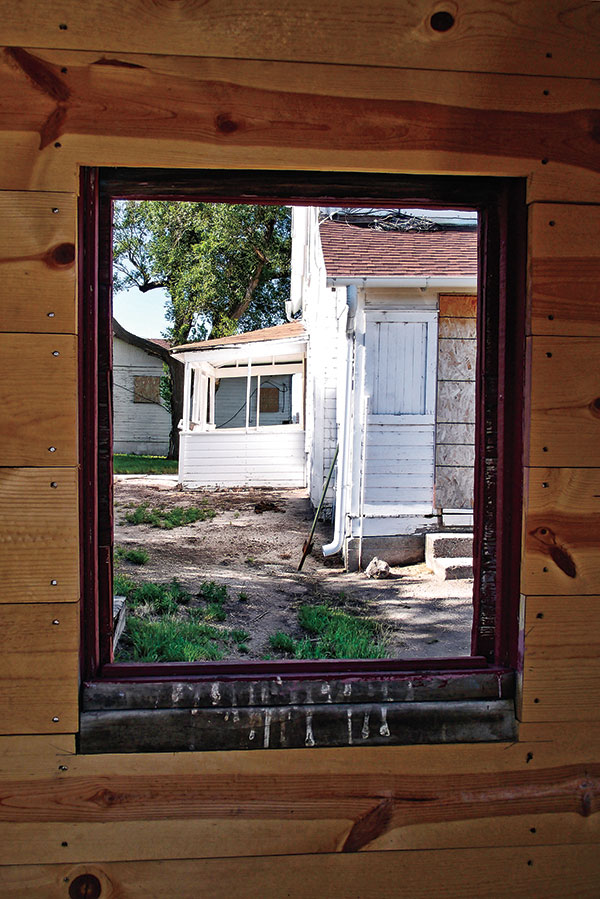Tamron 14-150mm Di III for Micro Four Thirds Lens Review

Tamron’s 14-150mm Di III is the company’s first lens designed for the mirrorless Micro Four Thirds camera system. When originally announced, this lens was supposed to feature built-in VC (Vibration Compensation) image stabilization but over the course of its development—there’s lots of in-body stabilization in this format—this feature was removed.
The lens has a metal barrel and is built to a high standard with top-notch fit and finish. It’s wrapped in your choice of black or silver finish. By comparison, Olympus has, in the past, charged extra for black and if the shiny look of this style concerns you (it didn’t bother me) you can opt for the more muted, retro silver. If you believe the whole equivalency thing the lens has the equivalent angle of view of a 28-300mm lens with a 52mm filter size, the same as Panasonic’s 14-42mm f/3.5-5.6 kit lens, so I can attach the same filters.

All Photos © Joe Farace
Tamron’s lens has one LD (Low Dispersion) glass element, two AD (Anomalous Dispersion) glass elements, two molded-glass aspherical elements, and one hybrid aspherical element to reduce chromatic aberrations and improve overall image sharpness, clarity, and color fidelity. Autofocus uses a stepping motor that’s optimized for this specific lens and produces quick, precise AF and because it’s quiet, the lens is well suited for capturing video.

Field Tests
I was never a guy to shoot lens tests using a resolution chart but did run a “brick wall” test (so you don’t have to) and found at 40mm the 14-150mm was crispy sharp edge-to-edge when wide open and slightly less so on the edges at f/22, which was identical to what I discovered at 150mm. As is typical for most lens designs, the sharpness “sweet spot” is around f/8 and f/11 and I was pleased with the razor sharpness of my shots at these apertures. The lens has a lock—please be careful with your fingernails—to keep the zoom from drooping when extended to 150mm. The sample lens I tested, however, had enough friction so this was never a problem. It’s always possible though that “lens creep” might start to show up with extended use, or as they used to say on the PBS show Are You Being Served?, “it will ride up with wear.”
Since Tamron’s 14-150mm Di III is built to the Micro Four Thirds standard, it works with Olympus or Panasonic cameras and I shot it with three different bodies from both companies. For a walk around Bingham Lake, I attached it to an Olympus OM-D E-M10 and the (just under) 10-ounce weight of the lens felt perfectly balanced with this tiny camera. I did use the camera with the ECG-1 Grip because the package better fits my hands.

While shooting in the Hidden Mesa Open Space, I mounted the Tamron lens on a compact Panasonic Lumix GX1 and it still felt ergonomically friendly. On a heftier Lumix GH4 with battery grip, it felt decent, so no matter what body you use, I expect the Tamron 14-150mm will feel right at home.
The 14-150mm Di III does a good job focusing to 1.6 feet even at 150mm but I’d recommend using a camera with in-body stabilization, such as the Olympus OM-D E-M10. While shooting close-ups at the Hidden Mesa Open Space and even when following the inverse-of-focal-length rule, it took four shots for me to get an acceptably sharp image with the non-stabilized Lumix GX1 as compared to the sharper flower shots made under similar conditions with the OM-D EM-10.
Bokeh fans will be glad to know the lens has a circular diaphragm, which should produce attractive background blur at wider apertures, although it didn’t knock me out at smaller apertures if I’m being honest.



Every year a local drag strip hosts a car show and series of races for Volkswagen enthusiasts and I thought this would be perfect to try the Tamron 14-150mm Di III at 14mm, 150mm, and every focal length in between. I selected the Olympus OM-D E-M10 because of its light weight but also because of its in-body image stabilization and the Tamron lens proved to be a worthy companion for this type of event. I was able to shoot everything from close-ups to on-track action and best of all, never had to schlep a heavy lens to accomplish those same goals, so consequently I felt just as relaxed at the end of the day as at the beginning.


Studio Tests
I put Tamron’s 14-150mm Di III to work in the studio shooting tests with my wife Mary, in anticipation of a Shutterbug lighting review and the mirrorless system’s inherent advantage of having an electronic viewfinder automatically adjust brightness made issues with shooting a not-so-fast zoom moot. When combined with the advantage of viewing the just-captured image in the viewfinder, you can quickly reshoot blinks or make slight posing tweaks without “chimping.”
Tamron’s 14-150mm Di III lens arrives in a marketplace with similar lenses from camera manufacturers (see “14-150mm MFT Lenses Compared”) but based on its performance, it should hold its own against these rivals, especially when used on Olympus cameras or Panasonic’s GX7, which have in-body stabilization. The company has a legacy of producing all-in-one lenses for SLRs and the 14-150mm Di III lens proved to be a versatile tool, whether I was shooting race cars on the track or making studio portraits.

For more information, contact Tamron at www.tamron-usa.com.

















































